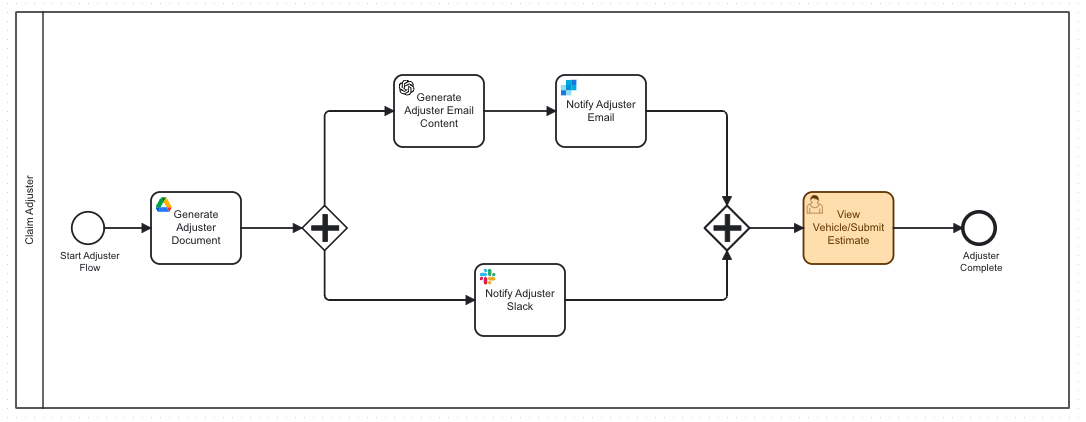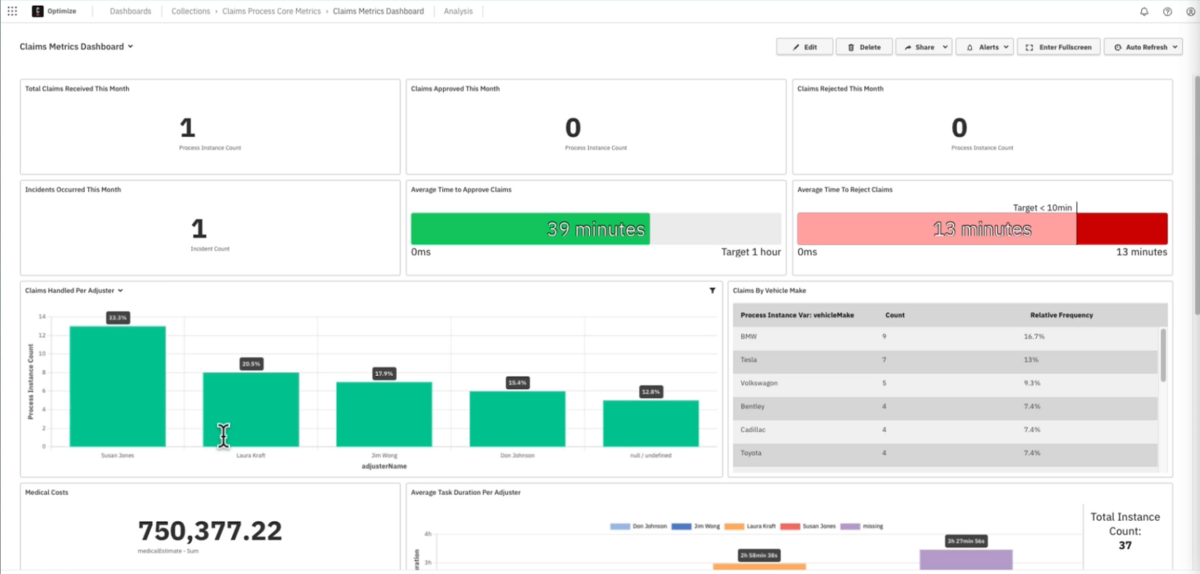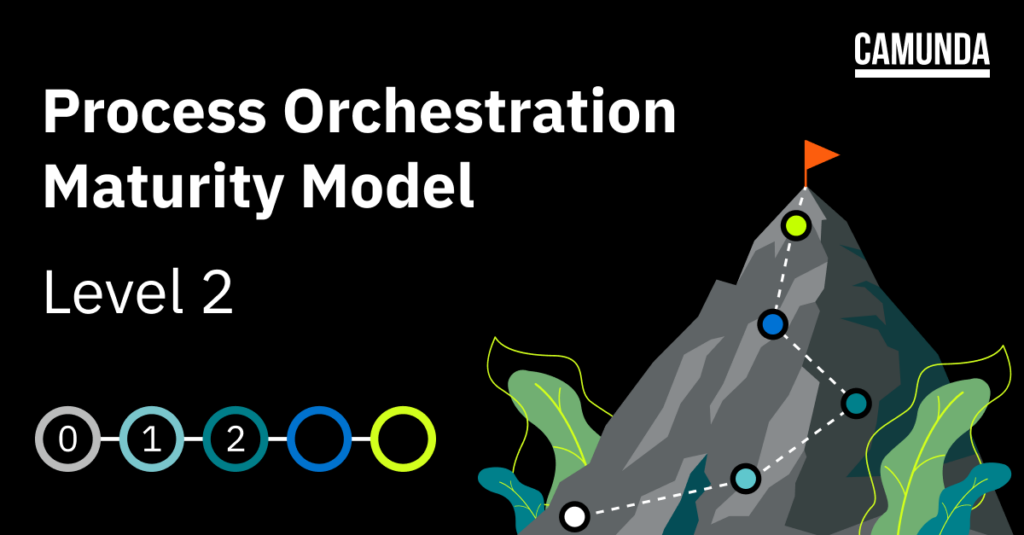Welcome to our second blog in our series on the Process Orchestration Maturity Model. Be sure to read the first blog in the Maturity Model series before reading this one to get an introduction to the first two levels.
What does your organization need to do to achieve Level 2 of the Process Orchestration Maturity Model?
What is the Process Orchestration Maturity Model?
To recap, in this blog series we’ll be discussing how you can advance your process orchestration maturity to overcome business challenges and understand where to focus in the future. As companies begin to look at their automation goals, there are different factors and drivers that help them assess their maturity around process orchestration.
This is the second post in the series. You can find the first post here.
Review of the drivers for Process Orchestration Maturity Model
Before we dive into Level 2, let’s review the drivers for the Process Orchestration Maturity Model so that we can apply them to the discussion. The drivers are described below:

What is the awareness of process orchestration as a distinct competency in the organization? Why does it matter to the organization?

What goals are the organization trying to achieve through its process orchestration practice?

Who defines the standards and policies for how process orchestration should be used? Who is responsible for implementing these changes?

How does the organization define process orchestration success? How capable is the organization at tracking that success?

What technology philosophies, platforms, and solutions power the organization’s process orchestration efforts?
Level 2 focuses on broader IT initiatives within your organization
Taking a quick look again at the maturity levels, we see that Level 2 is around broader IT initiatives.

If your organization has orchestrated a single project and is now thinking about extending that success to other IT initiatives, then you are approaching Level 2 in the Process Orchestration Maturity Levels. If you map your current organization’s status against the five maturity drivers, it might look something like this:

Your organization is looking at broader, scaled-up initiatives that are focused on better outcomes.

There is a focus on driving critical business outcomes from process orchestration.

Your IT teams want to empower business roles to understand their process orchestration projects.

Your organization is focused on defining and measuring success for individual projects and/or processes, but is still struggling to truly track KPIs.

Your company is focused on building a single technology stack that covers the entire process lifecycle.
Now that your company has captured the various departments and systems involved in your initial process and have connected them together—you can begin to concentrate on additional automation and measuring success. Because you took this time to automate human tasks, you can now look into bigger initiatives—like customer interaction, tracking your Key Performance Indicators (KPIs) and Service Level Agreements (SLAs).
With this level of automation, your organization is well on its way to building a technology stack for the future. Let’s take another peak at Camundanzia Insurance and see where they are currently as it relates to the maturity model.
Camundanzia Insurance achieves Level 2
So far, when we left them last, Camundanzia Insurance has received positive and solid feedback concerning their first pass at automating the automobile claim process. Collaborating with the claims department provided some input on enhancements to the process to simultaneously estimate the vehicle damages while also reviewing any associated medical injury claim. This will involve the implementation of more sophisticated BPMN constructs.

The claims department also provided input on how adjusters are assigned to claims at Camundanzia. They believe that can be implemented using business rules by adding a decision task to the process that executes a Decision Model Notation (DMN) table.

This DMN table uses the values of the process variables and makes the appropriate decision on which adjuster should be assigned to work on a specific claim.

Camundanzia also found that there is often documentation associated with the claim especially when medical injuries are included. That documentation needs to be accessible to medical claims processors so they can complete the proper review and determine appropriate damages to pay. Camundanzia needs to find a way to implement the access to those documents when they are ready and to properly associate them with the claim. They determined that they would “notify” the claims process that the documents were available using a webhook. The medical review process would wait until that notification was received.

Camundanzia was very pleased with the success of using the email Connector, in Level 0, for the notification of the insured about the claim status. They have found that they would like to take advantage of more connectors to minimize human errors and streamline the process even further.
Camundanzia has some ideas around using the OpenAI Connector to generate email content for the adjuster and the Google Drive Connector to automatically create documents using process variables. The subprocess shown below represents the way that Camundanzia implemented some additional Connectors in the process.

Finally, Camundanzia is considering extending the process using service tasks to handle the payments for damages to the insured by the payment system.
Using all these additional technologies and approaches, Camundanzia has implemented the following workflow. You can see that they have made use of gateways to allow for simultaneous processing of adjusters and medical reviews
With all these additional enhancements, Camundanzia was in an excellent position to start looking at their process to see if they were meeting KPIs and SLAs as well as to get a better understanding of where there might be issues in the existing process.
Using dashboards and reports, Camundanzia can see the costs of claims, which adjusters have the most work and how quickly they are processing that work, and the time it takes to complete certain tasks in the process. With this information, they can determine if any modifications should be made to streamline bottlenecks and improve processing.


These changes place Camunda in a great position to achieve the next level, Level 3, of the Process Orchestration Maturity Model.
Stay tuned for Level 3
You now have a good understanding of Level 2 of the Process Orchestration Maturity Model including an example company and how they achieved this level. Continue building your knowledge on this subject by checking out the next blog on achieving Level 3.
If you want to read more about this topic, please check out this webpage.
You can also review the webinar: Process Orchestration Maturity: A Practical Journey to hear about all levels and examples.


